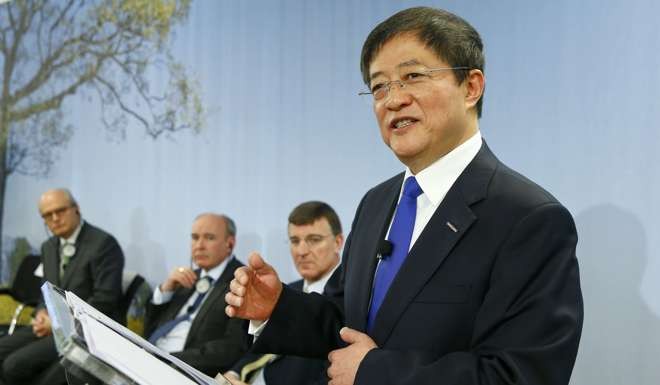Why when the Chinese come shopping for assets, there is no cause for alarm
Gordon French says concerns over Chinese enterprises going on an overseas mergers and acquisitions spree are misplaced, as it is just the sign of a ‘new normal’ amid a shifting economy

This has been the year that Chinese companies have truly gone global. Collectively, they have announced more than US$170 billion of acquisitions abroad during the first nine months of 2016 – more than in any previous year.
Not all have been welcomed with open arms by politicians, regulators or the companies being targeted for purchase. Concerns are understandable when a country quickly becomes such a force in global mergers and acquisitions: compare the anxiety about Japanese acquisitions in the 1980s. But there is a strong commercial rationale behind China’s overseas acquisitions, and these actually present substantial opportunities to the firms and economies in question.
While Chinese enterprises certainly need access to the brands, technology and – sometimes – growth prospects in international markets, they also have a lot to offer. Chinese capital can provide welcome cash injections, but a Chinese investor also brings valuable experience of operating in the vast, complex Chinese market that is critical to many firms’ growth plans.
As Chinese outbound merger and acquisition volumes surge and begin to involve household names, the headlines and scrutiny are not surprising. Eye-catching deals this year include ChemChina’s giant US$44 billion bid for Swiss agrochemicals company Syngenta, Haier’s US$5.6 billion purchase of General Electric’s household appliances arm; and white-goods maker Midea’s bid to take over German robotics company Kuka for €4.5 billion (HK$38.8 billion).

The initial impetus for China’s overseas mergers and acquisitions drive, 20 years ago, came from Beijing, which sought to get firms venturing beyond China to become globally competitive. The wave of activity over the past couple of years, though, is the product of more mundane drivers: the sheer size of the economy; the shift towards consumption, services and private-sector activity; and China’s slower growth trajectory.
First, consider the scale of China’s economy. Real gross domestic product in 2015 was 30 times that in 1978. In 2015 alone, GDP grew by an amount similar in size to the entire economy of Switzerland. Naturally, this growth has been accompanied by an expansion in China’s corporate universe: many more companies now have the scale, confidence and experience to make and implement big acquisitions.
Second, China’s economic rebalancing is influencing its outbound investment. Its once closed, state-led economy dominated by heavy industry, construction and exports is now much more driven by domestic consumption. Today, service-sector activity accounts for more than half of China’s GDP. The manufacturing sector is moving up the value chain and becoming more technologically sophisticated.
This shift has changed what Chinese companies are buying, and who is doing the buying. A decade ago, China’s forays overseas were mainly about securing the supply of natural resources and energy. Now, the mix of target industries is much wider. Consumer-related goods and services (entertainment, white goods, health care), high-technology industries (robotics, automotives), and information technology have moved higher up the shopping list.
The focus has shifted from what China needs to what it wants
The profile of those doing the buying has also changed. Ten years ago, a typical overseas acquisition involved a giant state-owned enterprise bidding for, say, raw materials assets in Australia. Now, it is likely to involve a private-sector firm pursuing an e-commerce player in Singapore or a Hollywood studio. So, the focus has shifted from what the country needs to what it wants; from basic resources to assets that meet the demands of an increasingly affluent consumer society.
Finally, China’s slower growth has fanned Chinese corporates’ desire to move beyond their home market in search of growth and diversification.
So, concerns that China seeks to exercise undue influence through its overseas acquisitions, or is driven by a desire to move capital offshore, are misplaced. Rather, this surge in activity is the result of an economy that is maturing – in size and range of appetites – and of companies motivated by a simple commercial rationale. China’s mergers and acquisitions – just like its economy – is just moving towards a “new normal”.
Gordon French is head of global banking and markets, Asia-Pacific, at HSBC